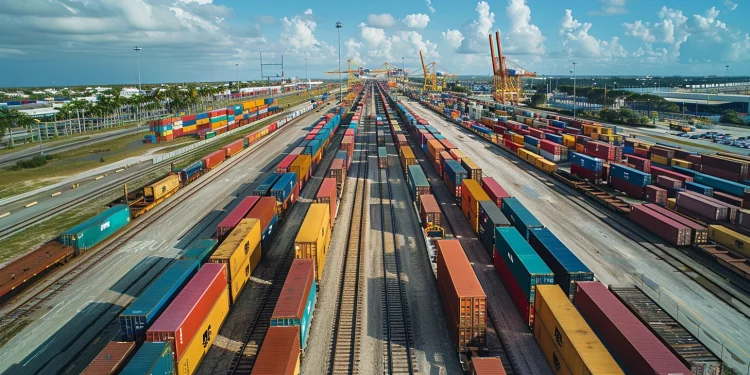While major Class I railroads dominate the headlines, a quieter revolution is brewing in the rail freight industry. Short-line railroads, smaller regional lines often operating single-track routes, are experiencing a surge in demand amidst the ongoing supply chain disruptions [Association of American Railroads – Short Line Railroads]. This trend highlights the vital role these often-overlooked players can play in a congested logistics network.
Here’s why short-line railroads are gaining traction:
- Filling the Gaps: Short-line railroads connect rural communities and industrial facilities to the national rail network, providing crucial first-mile and last-mile connections that major Class I railroads might bypass. This is particularly important for smaller businesses located outside major transportation hubs.
- Increased Flexibility: Short-line railroads offer greater flexibility and customization compared to larger carriers. They can often provide more personalized service and cater to specific needs of smaller shippers.
- Reduced Congestion: By taking on shorter haul freight, short-line railroads can alleviate congestion on major rail arteries, improving overall efficiency within the national network.
The growing importance of short-line railroads comes at a time when the industry faces several challenges:
- Infrastructure Investment: Many short-line railroads operate on aging infrastructure that requires upgrades to handle increased traffic and heavier loads.
- Workforce Shortages: The industry faces a shortage of qualified workers, including train crews and maintenance personnel. Attracting and retaining talent will be crucial for continued growth.
- Competition for Resources: Short-line railroads may face competition from larger Class I railroads for resources like locomotives and maintenance facilities.
Despite these challenges, the future of short-line railroads appears promising:
- Increased Investment: Recognition of their importance could lead to increased investment from private companies, government agencies, and potentially even partnerships with Class I railroads.
- Technological Advancements: Adoption of new technologies like Positive Train Control (PTC) can enhance safety and efficiency on short-line networks.
- Community Partnerships: Strong collaboration between short-line railroads and local communities they serve will be crucial for attracting businesses and revitalizing rural economies.
The growing demand for short-haul freight solutions presents a significant opportunity for short-line railroads. By addressing infrastructure needs, attracting talent, and building strong partnerships, these regional players can play a vital role in ensuring a more efficient, resilient, and geographically inclusive freight transportation system.























